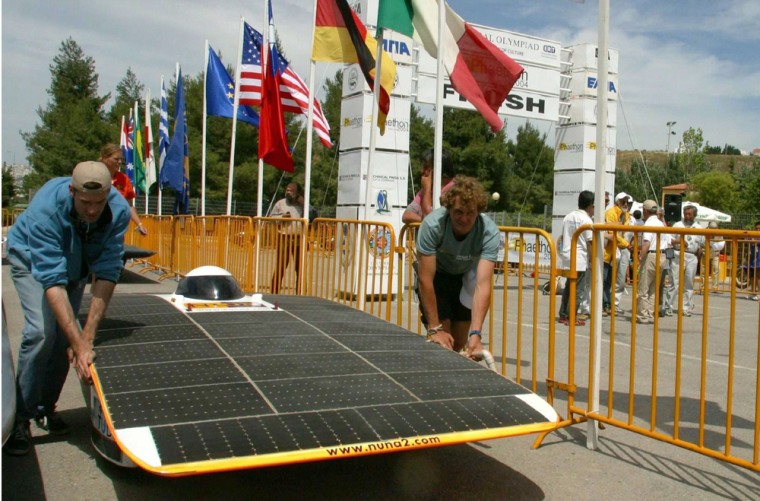Drivers in Scandinavia are doing double takes this week after a vehicle that looks like something straight out of "Star Wars" hit the road on a tour of Norway and Sweden.
Nuna 2, the world's fastest solar-powered car with a top speed of 105 mph, started a nine-day drive through the two countries Sunday to promote solar energy and space technology. The trip follows a tour through 15 other European nations last May through June.
The shiny, black vehicle — just large enough for one person — was built by a team of Dutch university students. It is powered by solar panels like those on European Space Agency spacecraft.
Down-to-earth technology
"We're trying to show that space technology can be used in other areas as well," said Johan Marcopoulos from the Swedish National Space Board, one of the organizers of the trip. "Hopefully, more people will become interested in the possibilities."
The 1,550-mile tour is scheduled to end in Andenes, northern Norway, on Aug. 22.
The three-wheeled car, 16 feet long and 6 feet wide, has an aerodynamic chassis that resembles an airplane wing. The driver lies inside the vehicle head up, and looks through a small Plexiglas bubble. With no room for a steering wheel, he uses two rods to turn the vehicle's three wheels.
Enthusiasts, though, should not get too excited. With a price tag of $500,000 for the Nuna II, solar-powered cars won't be in stores anytime soon.
"It'll be a while before we see solar cells on regular cars," said Rosita Suenson, ESA project manager for the journey. "There's a lot of other technology that must fall into place before that."
In October 2003, the Nuna II won a solar-powered race across the Australian Outback, setting a new record time for the grueling coast-to-coast challenge. It traveled the 1,870 miles at the World Solar Challenge in 31 hours, five minutes — first to the finish line at the world's biggest race for cars driven solely by solar energy.
'Odd bird on the roads'
Marcopoulos said the car likely will travel at an average speed of 40-55 mph on its Scandinavian tour. It will stop regularly en route to give people a better look.
A team of Dutch students will take turns driving the vehicle, which will have an escort of two ordinary cars.
"It's sure to catch the attention of other drivers," Marcopoulos said. "It's a bit of an odd bird on the roads."
Background on Nuna 2 is online at http://www.adiante2004.com/page.php
